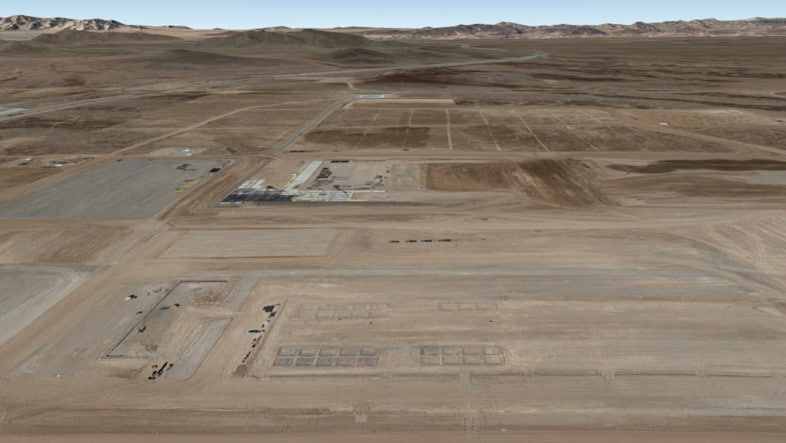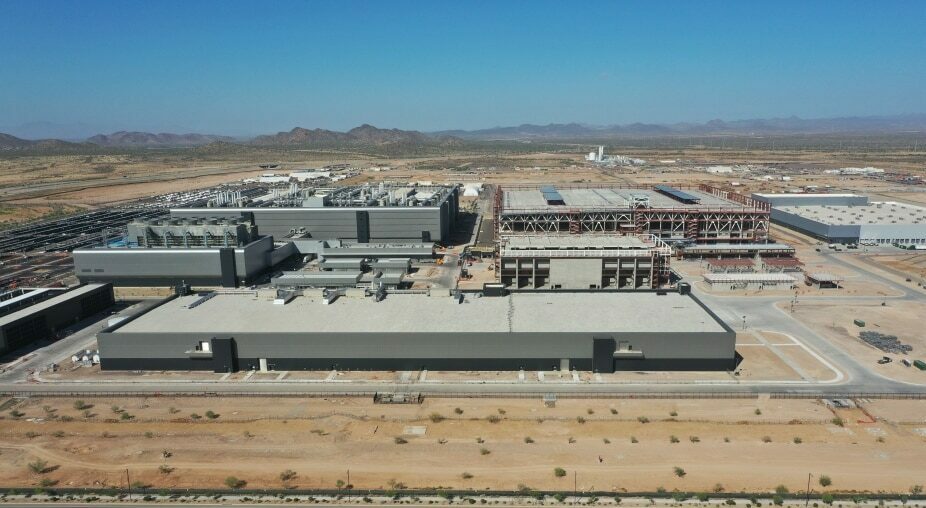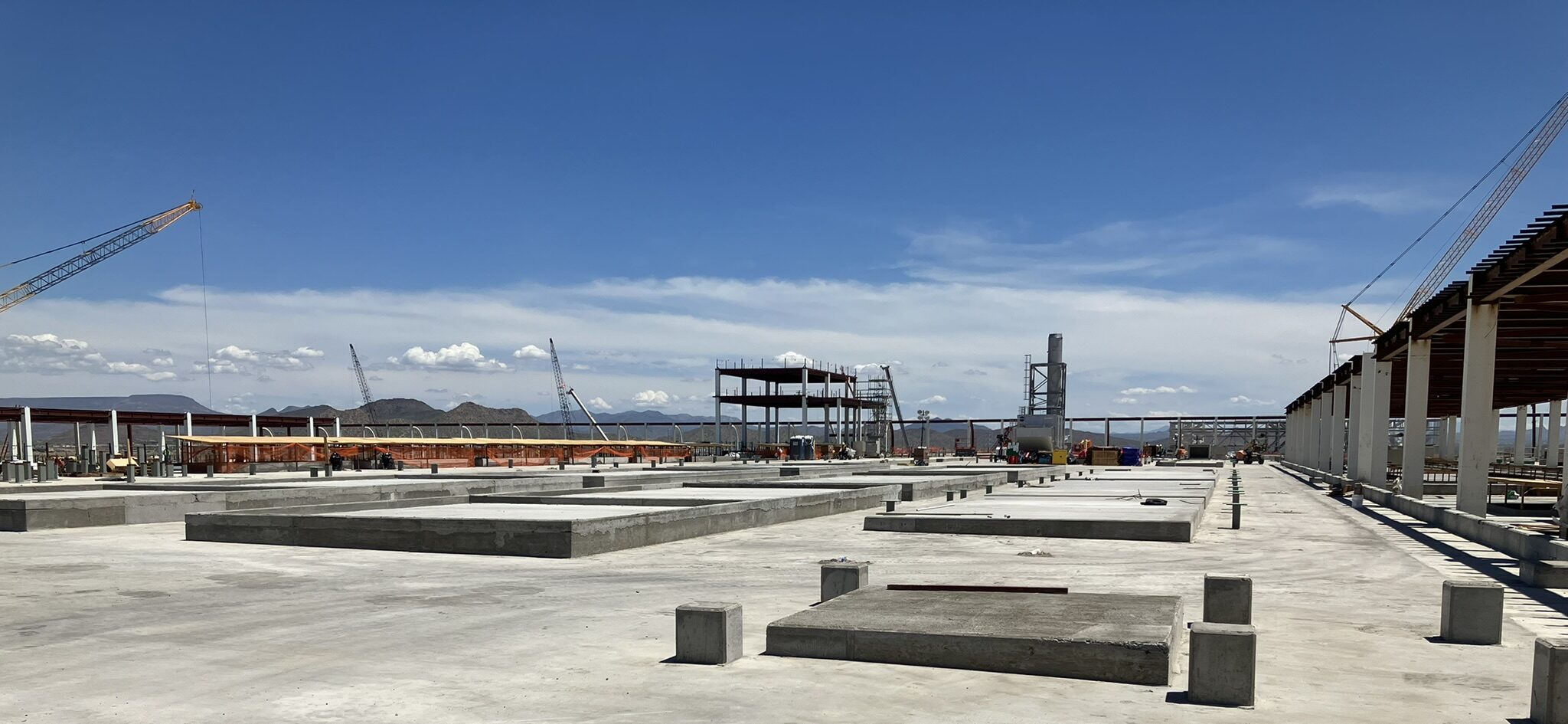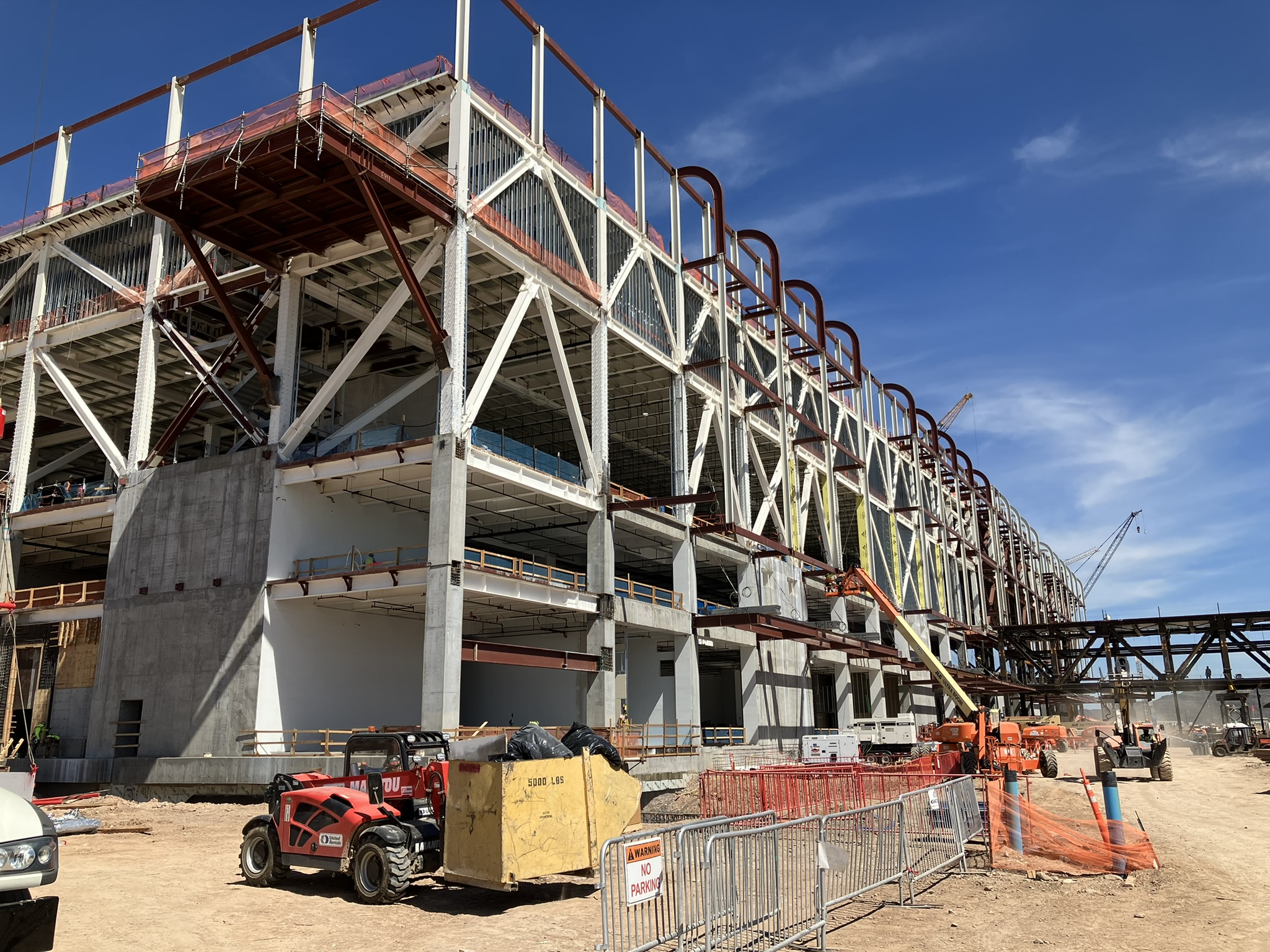In July 2022, Congress passed the CHIPS Act. The initiative strengthened semiconductor manufacturing, design and research in the United States. Since then, the construction industry has witnessed a boom in semiconductor construction, which requires special expertise, tight timelines and a team that doesn’t miss a beat. The vast Arizona desert is the perfect setting for these massive complexes, which was the case with a confidential semiconductor manufacturing client Sundt began work with in 2021.
The scope of work on this confidential project seemed insurmountable at first—construction of 16 utility buildings totaling approximately one million square feet. A large portion of the scope required Sundt’s self-perform concrete expertise. In 18 months, our teams produced a grand total of 230,000 cubic yards of concrete; at the height of the project, we had as many as 220 workers on site.
“I remember when Jessie (Jessie Castro, Construction Manager) looked at me and said, ‘We’re going to place 2,000 cubic yards of concrete tonight,'” laughed Roman Chavira, Sundt field superintendent. “The team thought it was unreal—but then it happened. We all realized that we were capable of doing even more with solid teamwork and refined planning.”


5/22/21 (left) versus 9/17/24 (right)
Taking Care of One Another
According to Vice President and Concrete Division Manager Danny Gumm, the key to success from the get-go was assembling the right team. “We had an area manager, a construction manager, a full-time project manager—you name it. We’ve never done a job that required so much senior leadership, but they integrated quickly, setting us off on the right foot.”
Construction Manager Jessie Castro explained that working on this particular job was an intricate dance. For nine of the 18 months on site, work was constant, with each task and shift rolling seamlessly into another, like dominos falling exactly into place.
Challenge came in multiple forms. From placing 120,000 cubic yards of the concrete in five months to constructing 500 columns with 700 linear feet of rebar in each, the team had to be on the top of their game. To execute this successfully, the culture on site needed to be rooted in positivity and collaboration.

“We started hot and heavy,” said Jessie. “We were boots on the ground and by day three, we were placing concrete. We began with placing 1,000 cubic yards per night, and gradually, we increased that number. Then, we started performing multiple placements per night across the site.” When work began, other contractors on site didn’t think it was possible to lay this much concrete in a single night, but Jessie and Ramon wanted to demonstrate that the key to success is building up the team’s confidence, skills and camaraderie.
Each morning, the team of project superintendents, engineers and managers discussed the strategy for the day ahead, motivating one another to solve challenges as a team and discover project solutions together. According to Jessie, it was the biggest challenge of his career yet was seamless with the support of his team. “We instilled confidence in one another, and we pushed each other to new limits.”
From the morning meeting, superintendents would pass information down to their craft workforce, communicating daily plans in small groups. There was also an intentional three-hour overlap between shifts, which made for effective communication between teams and consistency in the work.
Another consideration was the enormous amount of equipment on site to make this scope of work possible. The team went through inspections and safety hazards daily, with red boards being a key part of the operations and communication.
“I take a lot of pride in the team chemistry that developed on site. That team is still very close today, even though they’ve moved to new projects. They developed a bond that we hope and strive to recreate on every site.”
—Danny Gumm, Vice President and Concrete Division Manager
Then, there was the bonding. “All of our superintendents hosted monthly cookouts for craft, where they actually cooked, prepared and served the food on site. The team took care of one another in the big and the small ways,” said Ramon. “Every day, someone was asking me, ‘How are you doing? How’s your family? What are you doing this weekend?’ It made such a difference, and it changed the way we worked together.”

Moving Parts
Jessie’s team was charged with coordinating suppliers, installers and deliveries, and moving material and equipment around the 1,100 acre site. “We were managing multiple teams across the site, coordinating all of the concrete, all the moving parts—it was a team effort, with everyone knowing their role due to streamlined communication,” he said.
On average, the team was laying 2,000 to 3,000 cubic yards of concrete per night, totaling about 180-200 cubic yards per hour. Twenty concrete trucks were in a constant rotation, bringing materials back and forth to the site all night long. In fact, the team was laying so much concrete that they ended up consuming all of the cement in the area, and small batch plants had to be brought in from another state to support the work.
Another key piece of keeping the operations flowing smoothly was due to innovation and creativity on site. This innovation involved new equipment but was mostly due to the ingenuity of the team and precise coordination. One solution for efficiency was the decision to eliminate the forming of CJ with particle board and using stay form that can stay in place, reducing the time it takes to strip forms.
Ramon also wanted to make sure the job was as easy as possible for his crew in the field. “If we saw a new piece of equipment on the market that could improve our experience, mentally and physically, we would advocate for it,” he explained.

“Our team had 150 plus years of combined experience. Everyone on site had new ideas that were crucial to the success of the project, no matter what role they were in. We were able to take those ideas and implement the best solution and make that machine run. If one gear fell off, we would stop and reevaluate as a team. This was our key to success.”
—Ramon Chavira, Field Superintendent
In 18 months, the team on this confidential semiconductor manufacturing project accomplished what they thought was an impossible feat. Reflecting on the work, Jessie said, “If you have an aligned team who takes care of one another, nothing is impossible.”
Collectively, the work at this confidential data center took integrated coordination between many general contractors, subcontractors and trades. We’re thrilled to be a part of a project that will continue to bring prosperity to the valley.
Stay up to date with what we’re building in Phoenix.